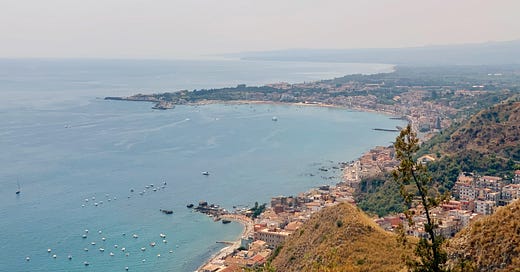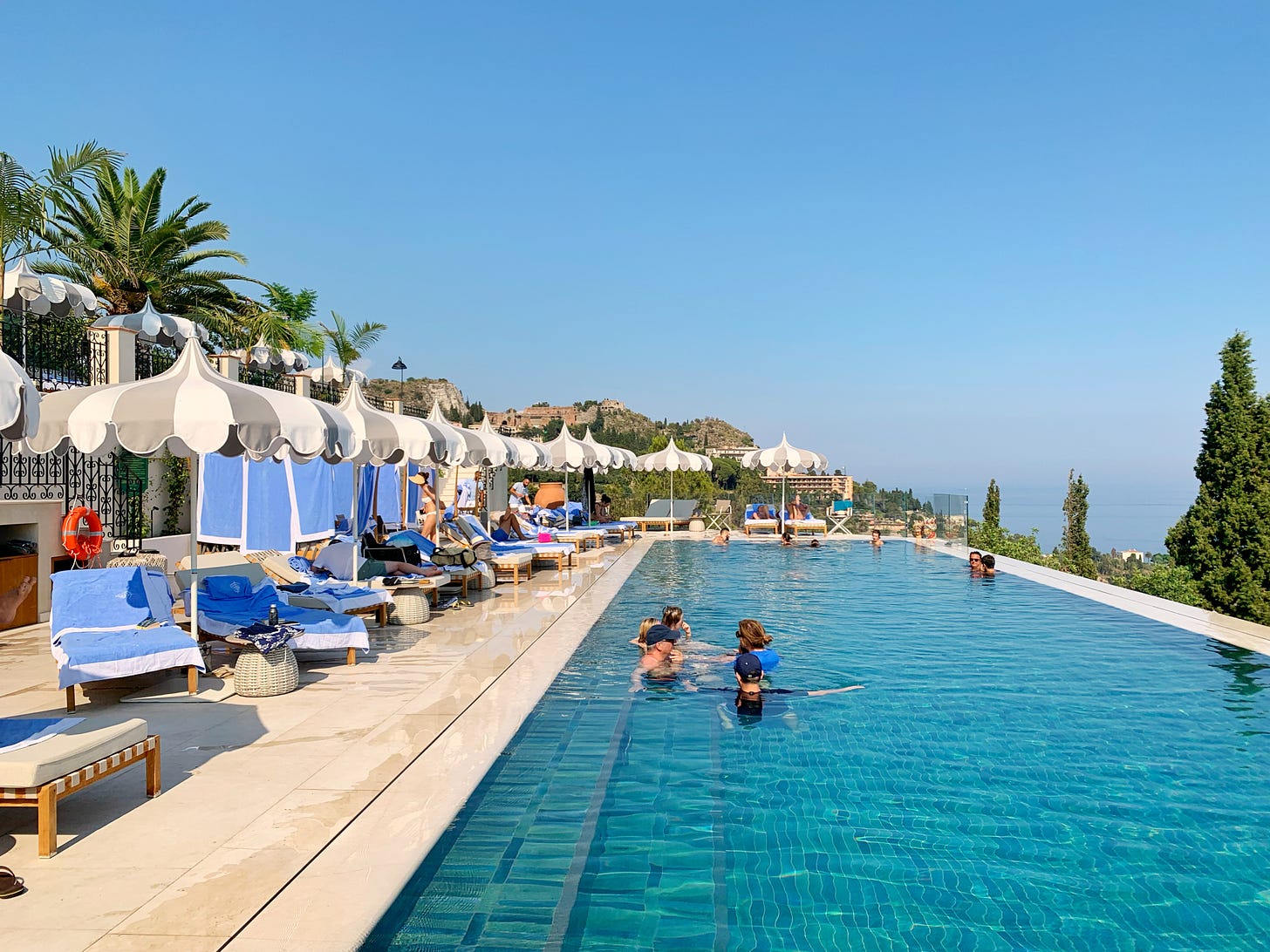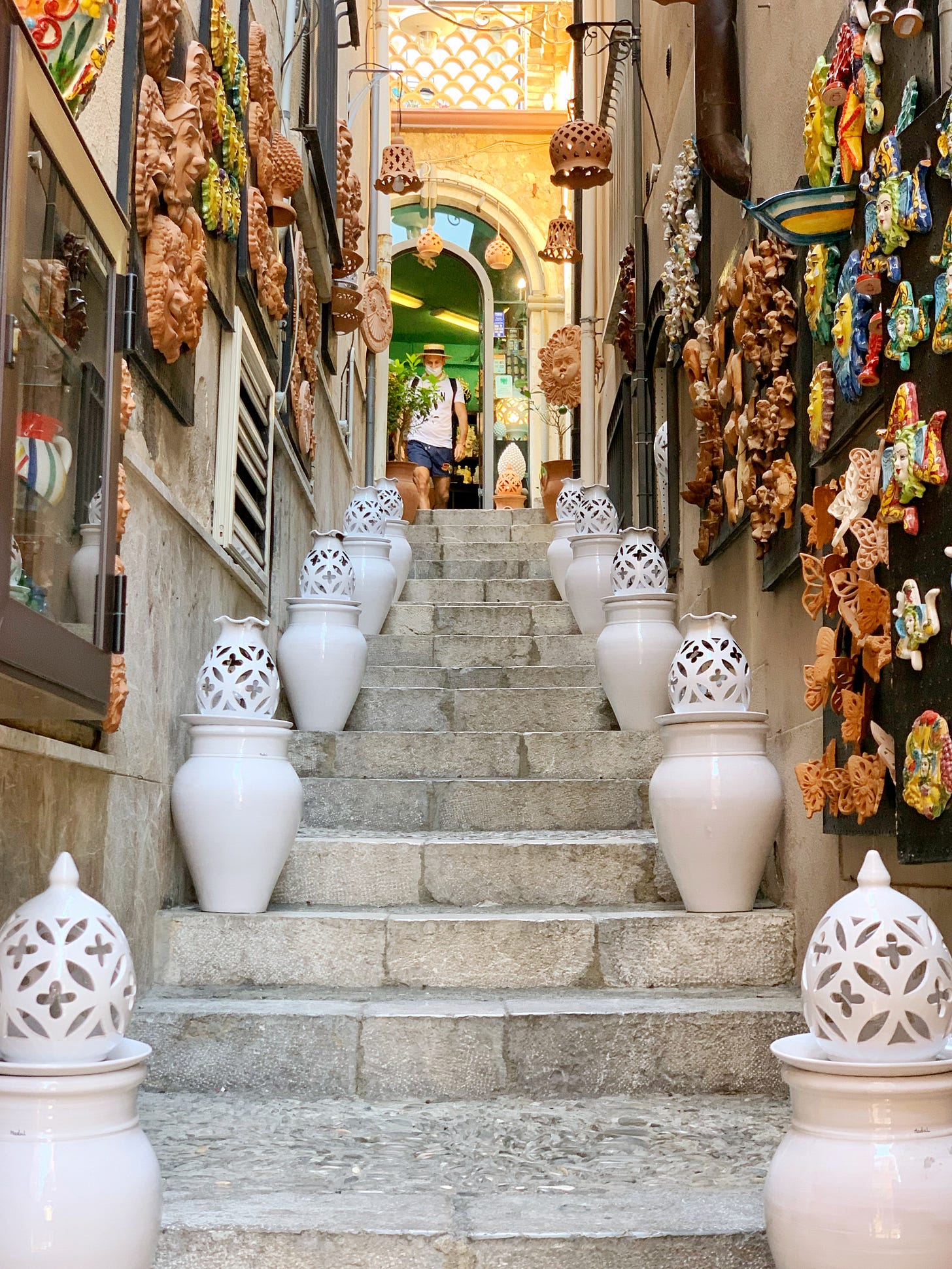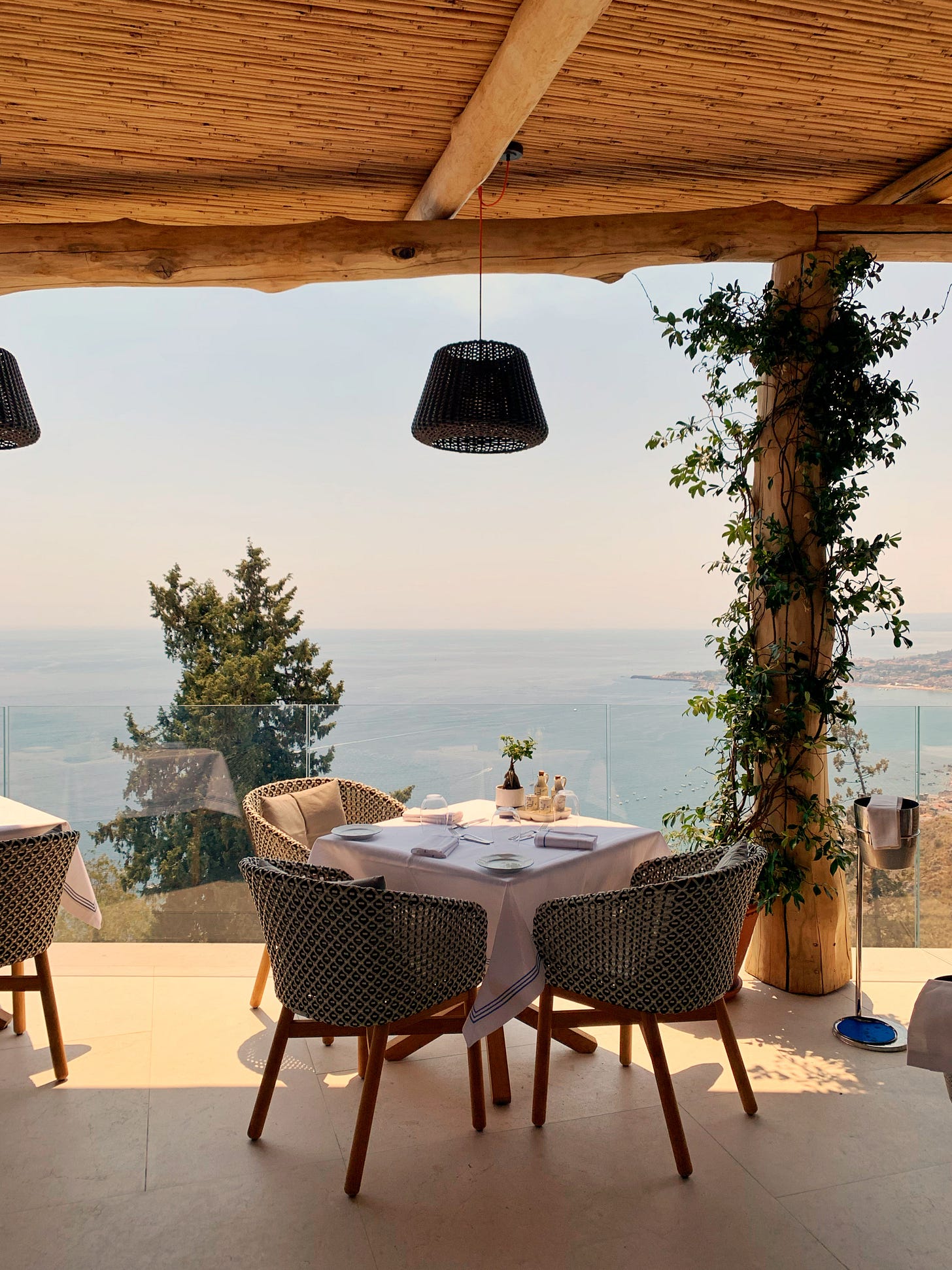Can a TV show ruin the destination it depicts? I’ve been thinking about this question a lot as I watched the second season of HBO’s Emmy Award-winning show, The White Lotus, which takes place in Taormina, a Baroque gem on Sicily’s eastern coast.
If you’ve been watching the show—created as a social satire with a bit of a murder mystery thrown in—you probably have some thoughts about the hotel guests depicted on it. Though the characters in the second season, which recently ended, are slightly less obnoxious than those in the first season, they’re not exactly role models. If you haven’t seen it, the show depicts a week in the life of the wealthy guests and the staff who cater to their whims at a fictional resort called the White Lotus. Essentially, it can be summed up as a show about rich people behaving badly at a very swanky resort.
So the idea of people booking a room at the hotels where the show was filmed in the hopes (whether conscious or unconscious) of emulating the characters seems like a rather disheartening thought. But booking they are. In fact, San Domenico Palace, the Four Seasons resort in Taormina where the second season was filmed, is sold out through 2023.
Of course, it doesn’t hurt that the show was filmed in gorgeous locales. While travelers have been flocking to Taormina since the age of the Grand Tour, it’s not depicted in the media as often as Italy’s heavy-hitters, like Rome, Florence, and Venice. Many of the show’s viewers may never have seen Taormina depicted on screen, so it makes sense that after being exposed to images of the glittering sea, glamorous beach clubs, charming centro storico, and people riding Vespas on the curving roads with breathtaking views of the coast, they would want to go.
Mike White, the show’s director, seems to be conscious of the effect that films and TV can have on the places they depict. In episode three, Portia joins Albie, his father, and grandfather on an excursion to Corleone, the town made famous by The Godfather. As they eat lunch outside the villa where a particularly violent scene was filmed, looking at a dummy sitting in a replica of the car that explodes with Michael Corleone’s young wife inside it, Portia wonders aloud, “It’s a little tasteless, maybe?” to which Albie’s grandfather responds, “Ah, they’re just trying to make a buck. They own the house where they shot the best American movie ever made.”
I didn’t visit Corleone during my two-week honeymoon in Sicily, but it doesn’t surprise me that tourists flock there. Nor would it surprise me that the locals would seek to capitalize off the place’s notoriety. They might not have asked for their fame, but if they can profit off it, why shouldn’t they?
The problem, I think, is that the hype created by films and TV shows (and, in this day and age, Instagram) results in the kind of overcrowding that threatens to destroy towns like Taormina and Positano. Eventually, the local craftsmen and casual trattorias are replaced by shops selling cheap souvenirs and overpriced restaurants that the town’s residents can’t afford to go to—and the result is that these places lose the authenticity that makes them worth visiting in the first place.
When Marco and I road tripped around Sicily for our honeymoon in August 2021, we already sensed that Taormina was the most touristy place on the island we visited—and that was before The White Lotus filmed there. The restaurants clearly catered to tourists with English menus and tourist prices. Corso Umberto, the town’s main drag, was lined with shops selling magnets, tote bags emblazoned with the town’s name, and other cheap souvenirs. The hotels were so exorbitantly expensive that I ended up using my credit card points to book a $600 room at a very average four-star hotel in the next town over. I remember feeling at the time like we had gone for the glamor of Taormina and accidentally ended up in Sicily’s version of Atlantic City or something.
Honestly, I would love to go back to Sicily next summer, but not if it means I’ll be surrounded by obnoxious rich people cosplaying The White Lotus. During our honeymoon, some of my favorite experiences were visiting beaches where I was the only American and savoring simple pleasures like the taste of an almond granita on a sweltering day—experiences that are accessible not just to the wealthy guests of resorts like the San Domenico Palace, but to the average Italians who have been summering in Sicily for years.
Even though the show’s first season was more ostensibly about the insidious disparity between the hotel’s ultra-rich guests and the Hawaiian staff, I would argue that similar issues are at play in Sicily, even if they’re less obvious. Perhaps the White Lotus effect will push me and other like-minded travelers further off the beaten path to, say, Pantelleria or the Aeolian Islands. For Sicily and Sicilians, that might just be the best possible outcome.
Further Reading
For AFAR, I wrote about some alternative destinations in Sicily to visit if you liked The White Lotus.
I also interviewed the GM of the San Domenico Palace, who called the characters’ deplorable behavior “extremely realistic” in this article for Fodor’s.
On the subject of overtourism and its nefarious effects, check out this hot take on Positano published by Vox.
If you’re curious about where else Marco and I went on our honeymoon, peep my feature for Hemispheres.









TA gets 50 euros a month from me and it’s usually my first stop when I get to Rome. I didn’t know you’d written about it so I will definitely read that. I’ve made such good friends from all over Europe due to my
association with the shelter.
Hi Laura.
I’m not sure if you remember me from Beth Am. You will always be Soshi to me. Mazel Tov on your marriage.
Anyway, my friend and I spent a week in Agregento in October. While it was beautiful, I would never go back. Not because it was touristy but because of the sheer amount of stray dogs and cats that are there. when you have two people who are pretty passionate about animal rescue it was tough to take. We shed many tears over this situation and the hardest part was no one really cared. These animals were so common that it seemed they were just part of the scenery and not noticed. The woman in the next apartment to us fed a bunch of stray cats which was nice. Maybe that is something you can investigate and write about.
Maybe the next time I’m in Rome I can buy you a coffee or gelato. It would be nice to see you. Be well.